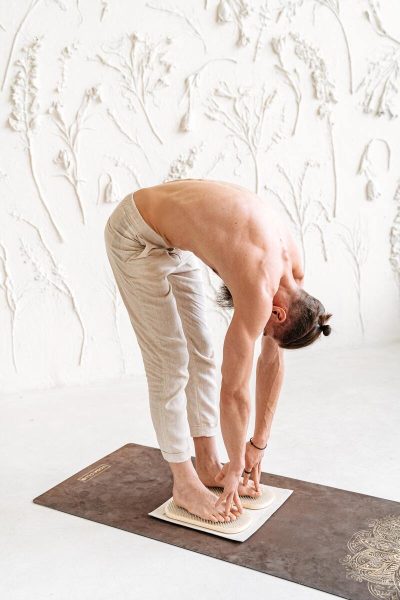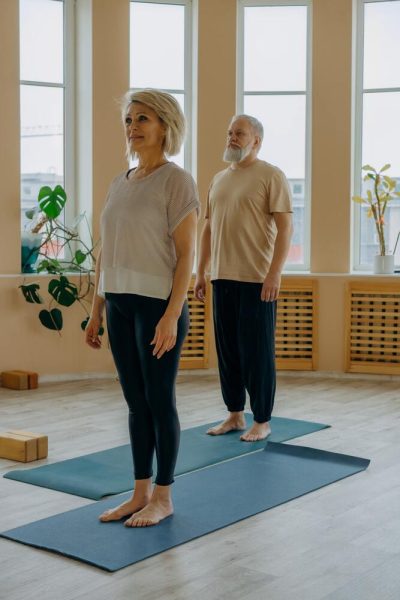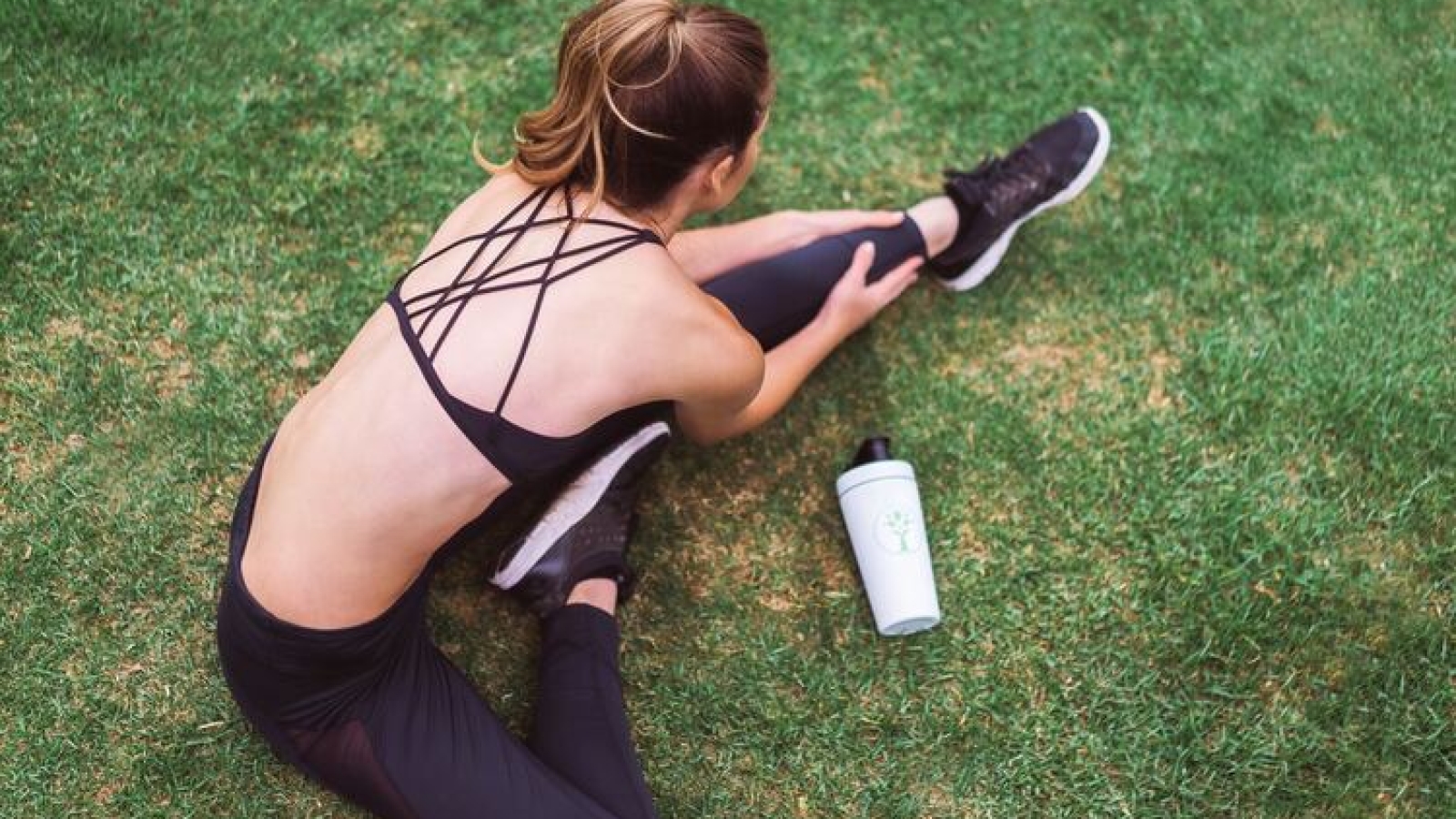Introduction
If you were wondering, “Is yoga good for cyclists?”, the answer is a definitive yes! Yoga physical stretching and positional exercises are specifically beneficial for your cycling routine, both physically and mentally. Let’s look at how yoga is good for cyclists.
5 Benefits of Yoga for Cyclists
1. Breathwork

Focused breathing is a superpower. Deep breaths calm your parasympathetic nervous system, allowing you to regulate your body emotionally and physically. A calmer nervous system leads to a calmer mind, which results in better decision making. Yoga teaches you to shift your energy with breath. This experience brings insight to your cycling performance, that you can use to subtly manoeuvre your energy, stamina, and timing with regulating your nervous system.
This looks like noticing you’re taking shallow breaths and shifting into a deeper breathing technique. Breathwork practice and awareness will automatically transfer to your cycling practice, and you will get a better idea of regulating your body. Breathwork will also give you greater control in using your muscles while cycling.
2. Flexibility

Deep stretching is important to stay flexible This important benefit is so essential because cycling is an exercise that requires you to stay in a specific hunched position for an extended period. So, yoga which stretches our bodies, can help you reduce any upcoming body aches. Stretching out the stiffness in your muscles will help make you more flexible.
Yoga provides adequate stretching for all muscle groups, whether in your arms, legs, back, or neck. Over time, this flexibility will also increase stamina or reduce break time between long cycling sessions as your body will ache less. Post-cycling yoga is also suitable as a lighter exercise than running or weight lifting.
3. Strength

Core strength is important to any cyclists. Luckily, yoga focuses on core movements that allow for more body control while practicing strength, stability and balance overall. Your core can be strengthened with different yoga positions.
A strong core will allow you to enjoy rides with a quicker recovery time, as you’ll slouch less and maintain stamina. It’ll help you manoeuvre the bike confidently with less chance of injury, thanks to better control over your body.
4. Mental Clarity & Concentration

In any fitness routine, staying on track is one of the most important factors. Your willpower and the ability to stay focused will decide your progress. Yoga encourages you to delve further into your mind to heighten your body awareness. It teaches you to be disciplined, and aware of your direct actions during your routine. As a result, you become more conscious of your decisions.
Discipline teaches you to trust when to change the course of action your body, in any challenge, for example, when to turn or slow down. Furthermore, as a cyclist, your ability to stay present while staying in control of your movement is one of your greatest advantages. Yoga is one of the best exercises to improve your focus.
5. Balance & Quicker Recovery

Yoga stretches your whole body and creates balance. This is important because when you cycle, only certain body muscles work. Thus, it may create an imbalance in muscle strength.
Balanced muscles work together to exert energy more harmoniously, allowing less energy to be exerted. As your whole body’s joints work together to balance out tension, there are fewer chances of injury and a quicker recovery time. It helps you avoid common cycling aches and injuries such as injuries in the hamstrings and the back.
5 Simple Yoga Poses To Do After Cycling For Muscle Recovery
1. Cat Cow Pose

This pose will help you warm up gently by opening your chest, while gently stretching your spine and neck.
- First, get down on all fours with your hands and feet shoulder-width apart.
- Your knees should be aligned with your hips, and your hands should be directly under your shoulders.
- Take a deep inhale and look forward. Arch your spine, dropping your belly towards the ground. Relax your limbs.
- Then, to switch into the cat position, exhale while bringing your head down and rounding your spine.
- Take time to alternate between these two postures. Repeat this sequence three times.
2. Downward-Facing Dog

This pose will work your entire body and reduce tightness.
- Move from your previous position to spread your hands and use your fingers ground to grip the mat.
- Straighten your legs, lifting your hips towards the ceiling. Ideally, your heels should be pressing into the ground.
- With your arms and legs extended, your body will form an inverted “V” shape.
- Allow a gentle bend in the knee and keep your shoulders relaxed.
- Readjust your feet and even out your balance.
- Slowly inhale and exhale. Keep your core engaged and your spine long.
- Hold this posture for five to three breaths.
3. Pigeon Pose

This pose is great for your flexibility.
- From the previous position, bring your right knee forward to bend to touch the mat.
- Change the position of your hands to support you and or use blocks for easier accessibility.
- Slide your left leg back, keeping your left foot flat on the floor.
- Rotate your right hip so that your right thigh is parallel to the front of your mat.
- Lower your hips towards the mat, keeping your right knee over your right ankle.
- Be gentle, and don’t push yourself too hard.
- After three breaths, switch sides by bending your left knee and sliding your right leg back.
- Repeat three breaths for this side too.
4. Bending Forward Pose

This pose will stretch your whole body and increase flexibility.
- Roll into a standing position, keeping your back straight and your chest open.
- Place your hands on your hips and take a few deep breaths.
- Then, slowly bend at the hips and try to touch the floor with your hands.
- Try not to bend your knees, and keep your feet firmly planted on the ground.
- Don’t push yourself to touch the ground very hard; only do as much as you can without pain.
- Inhale and exhale slowly for five breaths.
- If you feel dizzy, come up and rest or lie down for a bit.
5. Mountain Pose

Mountain pose will enhance your posture. If you want to raise the difficulty level, you can end this sequence with a tree pose instead.
- First, you stand straight, with both arms at your sides.
- Your feet should be hip-width apart, parallel to each other.
- Focus your attention on your heels, let your weight evenly distribute.
- Keep your spine straight from your head to your tailbone.
- Draw your shoulder blades down and back, away from your ears.
- Relax your jaw.
- Gaze straight ahead with a soft gaze.
- Slowly inhale and exhale.
- Hold the pose for five deep breaths.
Conclusion
In the end, yoga is excellent for muscle recovery after cycling. It is a transitional exercise that adds value and balance to your overall fitness. It is cost effective and can be done with minimal equipment. With a simple, consistent routine sequence, your benefits will range from better focus, injury prevention, breathing efficiency, lower tension, and strength.
Read more: 12 reasons why your bike chain keeps falling off and how to fix it.

Add a Comment